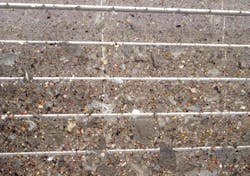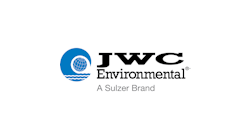By Kevin Bates
That day has finally arrived: you are getting fine screens for your plant’s headworks. The hours spent nursing the old coarse screens while your crew is continually clearing out trash from the clarifier will soon be behind you. While it will undoubtedly be a huge benefit for the operations of the entire plant, are you sure you made all the right decisions along the way? Let’s take a look at a few questions to consider when selecting both your fine screening solution as well as your technology manufacturing partner.
Why a Fine Screen?
Fine screens are specifically designed to remove smaller pieces of trash, such as rags, wipes, cotton swabs, plastics, and latex that will easily pass through traditional mechanical bar screens or coarse screens. Without such protection for the plant, trash quickly becomes problematic for operators downstream as it collects on aerators, causes scum blanket accumulation in digesters, fouls MBRs, clogs pumps, and floats in final clarifiers.
What is a Fine Screen?
A fine screen is traditionally defined as a solids removal device for plant influent that has openings in minimally one dimension of 6 mm (1/4 inch) or less. It gets more complicated when you look at how that 6 mm (or smaller) opening is specified.
One-dimensional fine screening is designed to capture debris in a similar method as coarse screens or step screens, utilizing closely spaced vertical bars. While these products will capture more than coarse screens, they are susceptible to passing items that can turn vertically and float on through.
The alternative approach is two-dimensional screening, which meets the same 6-mm-or-less opening requirement but does so in two directions. By utilizing perforated plate as the screening material, the two-dimensional screening approach will typically achieve higher capture rates than vertical bar screening.
More Screening Waste — Now What?
While today’s fine screens possess narrower openings than previous generations of pretreatment screens and will achieve increased capture rates, this also means they discharge more screenings than typical coarse or bar screens — sometimes twice as much. With the increased capture rates, fine screens can also remove many of the essential organics, such as fecal waste, from the influent stream that are critical to the biological process. Ignoring this reality of fine screening can be disastrous for a treatment facility.
Ignoring the reality of fine screening can be disastrous for a treatment facility.
Some manufacturers have developed innovative screening washer-compactor equipment with sewage waste grinders that can handle the increased load of solids while releasing the organics back into the treatment process. These grinders break up the rags and waste to facilitate better washing. By doing this, the plant can achieve maximum removal of fecal material from screens and achieve both cleaner screenings and retention of those essential organics within the waste stream.
What Makes a Good Fine Screen Partner?
Choosing the right fine screening technology provider is ultimately the most important decision a plant and engineering consultant will make. Years of experience, specifically in fine screening, along with the ability for the manufacturer to perform on-site service are two important considerations. Experience teaches a fine screen manufacturer what will and will not work, how to size a screen and properly account for blinding, how to minimize carryover, and ultimately how to reliably protect the sensitive treatment systems downstream. On-site service capabilities allow for continuity of operation of the plant without having to incur the expense of removal and shipping a screen to a factory for any significant service work.
If you have the opportunity to improve your facility, make sure you weigh your options carefully so you can be proud of your fine screening decision for many years to come. WW
About the Author: Kevin Bates is the Director of Global Marketing at JWC Environmental based in Santa Ana, Calif., a Water and Wastewater Equipment Manufacturers Association (WWEMA) member company. Since 1908, WWEMA has informed, educated, and provided leadership on the issues that shape the future of the water and wastewater industry. For more information, visit wwema.org.





